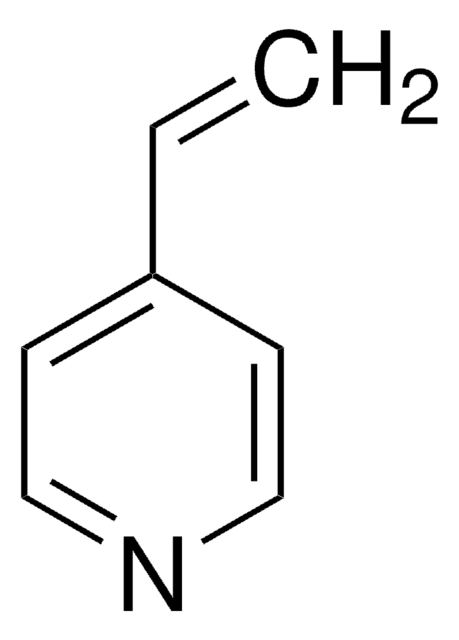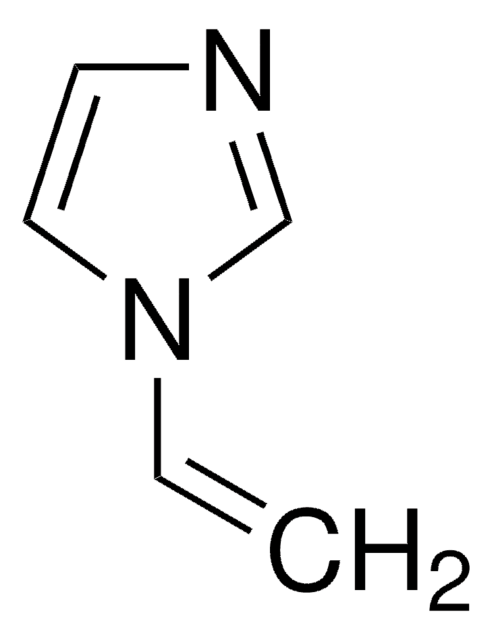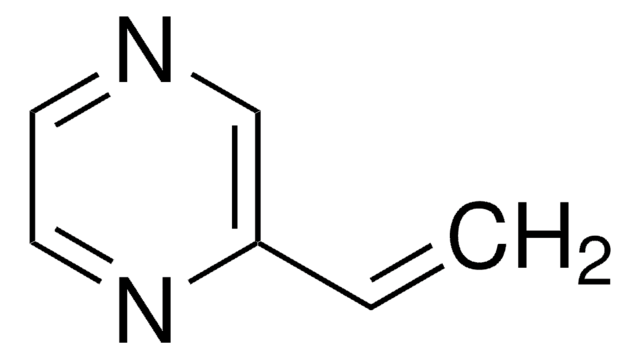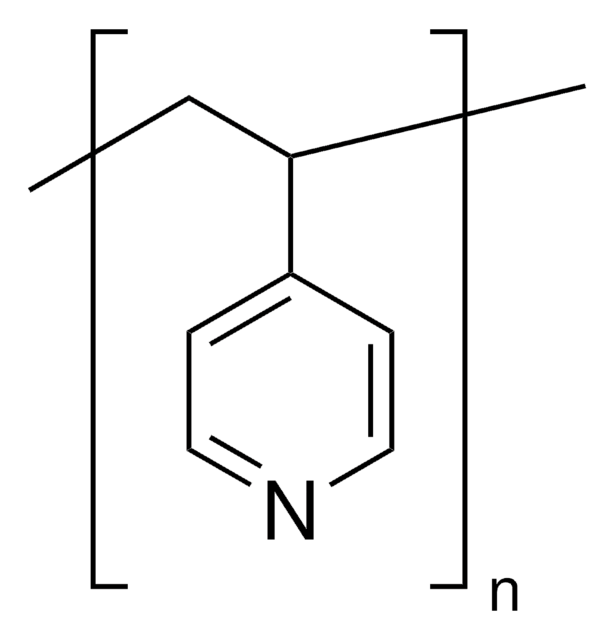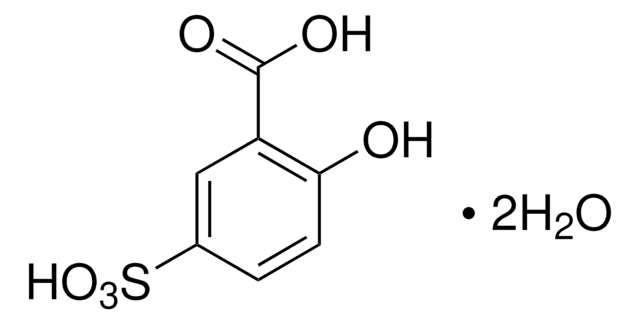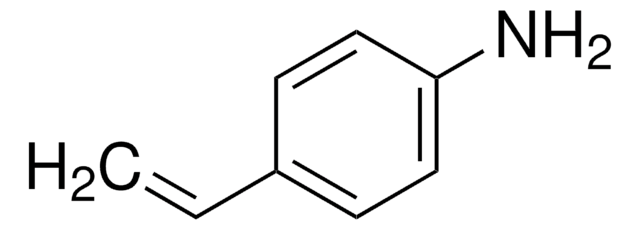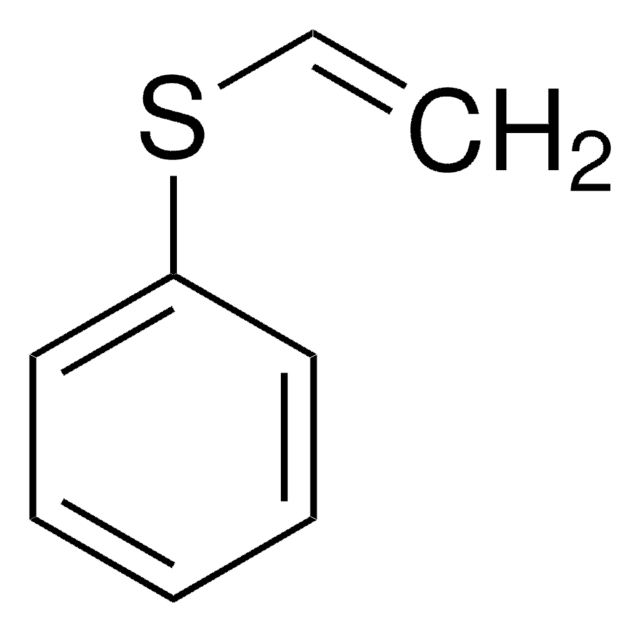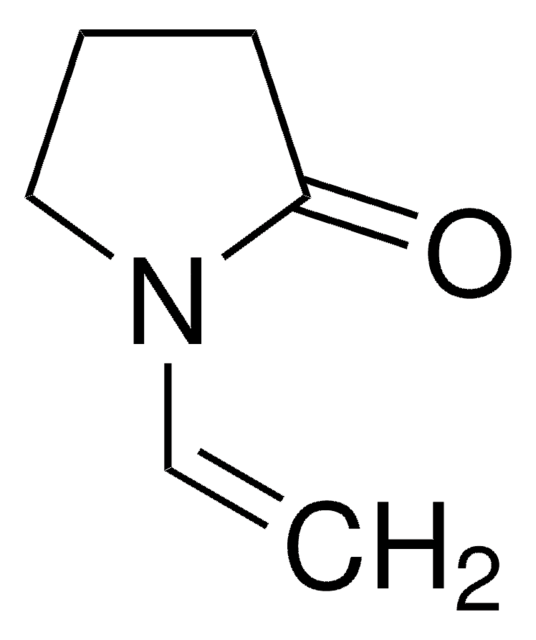Kluczowe dokumenty
132292
2-Vinylpyridine
97%
Synonim(y):
α-Vinylpyridine, 2-Ethenylpyridine, 2-Pyridylethylene
About This Item
Polecane produkty
ciśnienie pary
10 mmHg ( 44.5 °C)
Poziom jakości
Próba
97%
Postać
liquid
zawiera
0.1 wt. % p-tert-butylcatechol as inhibitor
współczynnik refrakcji
n20/D 1.549 (lit.)
tw
79-82 °C/29 mmHg (lit.)
gęstość
0.975 g/mL at 25 °C (lit.)
temp. przechowywania
−20°C
ciąg SMILES
C=Cc1ccccn1
InChI
1S/C7H7N/c1-2-7-5-3-4-6-8-7/h2-6H,1H2
Klucz InChI
KGIGUEBEKRSTEW-UHFFFAOYSA-N
Szukasz podobnych produktów? Odwiedź Przewodnik dotyczący porównywania produktów
Powiązane kategorie
Opis ogólny
2-Vinylpyridine (2VP) is a water soluble pyridine derivative that can be used in the synthesis of poly(2-vinylpyridine) (P2VP) by anionic polymerization. It can be industrially prepared by treatment of 2-methylpyridine with an aqueous solution of formaldehyde in a temperature range of 150-200°C.
Zastosowanie
- In the preparation of P2VP oligomers to study their properties and behavior on various surfaces, with a focus on area-selective deposition techniques.
- To synthesize pH-responsive thin film membranes, which can be used for various applications, such as separation, filtration, and catalysis.
- To synthesize degradable block copolymer-derived nanoporous membranes, which have potential applications in various fields, including energy-related catalysis and nanoparticle synthesis.
- To improve the effectiveness of protective polymer coatings on metals.
Hasło ostrzegawcze
Danger
Zwroty wskazujące rodzaj zagrożenia
Zwroty wskazujące środki ostrożności
Klasyfikacja zagrożeń
Acute Tox. 3 Dermal - Acute Tox. 4 Oral - Aquatic Chronic 2 - Eye Dam. 1 - Flam. Liq. 3 - Skin Corr. 1B - Skin Sens. 1
Zagrożenia dodatkowe
Kod klasy składowania
3 - Flammable liquids
Klasa zagrożenia wodnego (WGK)
WGK 3
Temperatura zapłonu (°F)
122.0 °F - closed cup
Temperatura zapłonu (°C)
50 °C - closed cup
Środki ochrony indywidualnej
Faceshields, Gloves, Goggles, type ABEK (EN14387) respirator filter
Wybierz jedną z najnowszych wersji:
Masz już ten produkt?
Dokumenty związane z niedawno zakupionymi produktami zostały zamieszczone w Bibliotece dokumentów.
Klienci oglądali również te produkty
Nasz zespół naukowców ma doświadczenie we wszystkich obszarach badań, w tym w naukach przyrodniczych, materiałoznawstwie, syntezie chemicznej, chromatografii, analityce i wielu innych dziedzinach.
Skontaktuj się z zespołem ds. pomocy technicznej